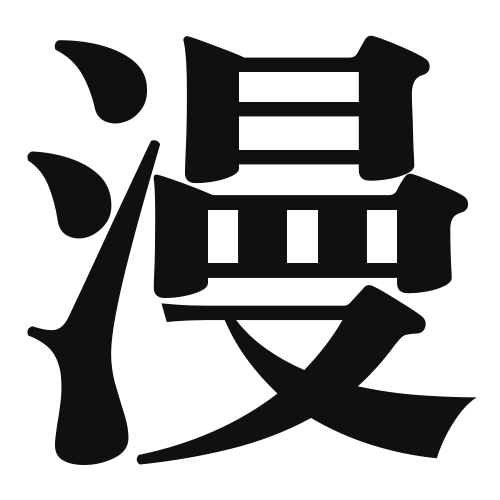1. Overview of Meaning
The kanji “漫” (man) generally means “free” or “unrestrained.” It conveys a sense of being carefree or flowing without limitations, often associated with art, literature, and expression.
2. Formation and Radical
Formation of the Kanji: The kanji “漫” is a phonetic-ideographic character (形声文字), which combines a meaning component and a phonetic component. The left part “氵” (water radical) suggests a connection to fluidity, while the right part “萬” (man) provides the phonetic sound.
Radical: The radical of “漫” is “氵” (water), which often relates to things that flow or are fluid in nature.
3. Examples of Usage
Common Words and Phrases:
- 漫才 (manzai) – a form of Japanese stand-up comedy
- 漫画 (manga) – comic books or graphic novels
Example Sentences in Daily Conversation:
- 彼は漫然と絵を描いている。 (He is drawing pictures freely.)
- この漫画はとても面白い。 (This manga is very interesting.)
4. Synonyms and Antonyms
Similar Kanji:
- 自由 (jiyuu) – meaning “freedom,” which conveys a similar sense of being unrestrained but is more focused on the concept of liberty.
Opposite Kanji:
- 制限 (seigen) – meaning “restriction,” which conveys the opposite idea of being limited or constrained.
5. Cultural and Historical Background
Connection to Japanese Culture: The kanji “漫” is often associated with creative expression, particularly in the context of manga and art, which are significant aspects of modern Japanese culture.
Proverbs and Idioms:
- 漫然と過ごす (manzen to sugosu) – meaning “to spend time aimlessly,” reflecting a carefree attitude.
